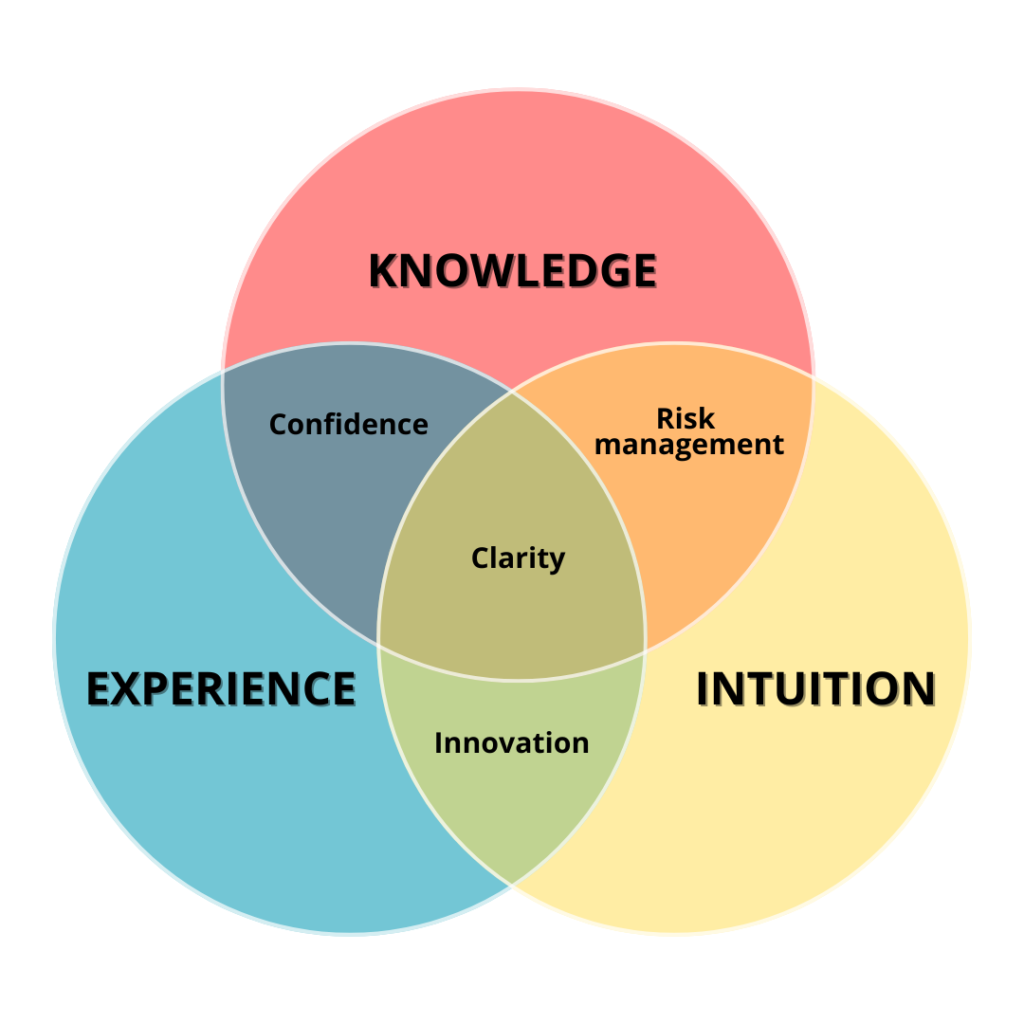There are things that we know but cannot tell.
Michael Polyani
Many of us have an intuitive sense of what we are doing, in whatever professional field we have chosen. Years of experience, and Gladwell’s famous 10,000 hours required to build expertise, can lead us to feel confident in our own ability to identify and respond to the challenges before us. Knowing how we know something, however, can be difficult to articulate.
Donald Schön was one of the foundational shapers of organisational learning theory in the latter half of the 20th century. His 1983 book, The Reflective Practitioner, proposed a theory to describe the way professionals solve problems ‘on the job’ that has informed much of the common thinking today about learning organisations. While Schön’s work was not designed for the digital world in which we live, the basic theory remains relevant in this age when we have greater access to information yet less time to mentally process it. Human ingenuity is still required to harness both the powers and the risks of the information available.
Knowing-in-action refers to thinking ‘on your feet’ and describes the way that experienced practitioners apply their knowledge by doing. A doctor, for instance, may see a new set of symptoms she hasn’t seen before; a manager may be confronted with a team conflict he hasn’t had to address before. How each professional works through the problem at hand provides lived experience applicable to future challenges. While largely unconscious, there is a rigour to the way in which professionals retrieve prior experience or learning and apply it to the problem before them. One makes sense of what one sees by relating it to what has been experienced before, and then works through what is similar and what is different. We learn from experimenting, applying knowledge in a new way or to a new situation and observing what happens.
Knowing-in-action occurs on the job. Reflection-in-action also occurs in the moment but is retrospective. An architect may reflect on the design of a building that proved problematic in its construction. A dancer may reflect on a performance and the factors that influenced its quality. In this way, the professional also builds a body of internal evidence to apply to the next situation.
Human beings have done this type of thinking throughout our history, building the knowledge base we have today in the process. The unique challenge of the 21st century, however, is the pace of change. Leaders are required daily to learn and adapt as the world around them changes quickly. Political and policy environments can feel like shifting sands as competing voices seek to influence the environment in which organisations operate. In the midst of such complexity it is ever more essential to assess all forms of evidence when making plans or considering new opportunities. Even so, in our digital age it simply isn’t possible to fully assimilate all the data and information that may be available.
For this reason, framing the question itself becomes the critical action of a leader. The challenge today is to retain space for reflecting-in-action in order to frame the questions that require attention. Schön writes, “In order to convert a problematic situation to a problem, a practitioner must do a certain kind of work. He must make sense of an uncertain situation that initially makes no sense…Problem setting is a process in which, interactively, we name the things to which we will attend and frame the context in which we will attend to them” (page 40).
Reflective (and unplugged) practices call upon one’s intuition, wisdom and experience to help us see the bigger picture and discover where as-yet-unforeseen risks may lie. Giving space for unarticulated questions or concerns to emerge can also help identify what aspect of the situation requires attention. There is rigour and structure in developing disciplined habits for professional reflection and there are many ways to foster reflection-in-action, for instance journalling as an individual or structured group processes such as double-loop learning.
I have developed a framework for intentional reflection to help leaders consider what questions they need to ask and where their insight gaps may lie. The diagram below summarises the three components supporting the reflection-in-action process: knowledge, experience, and intuition. Together:
- knowledge and experience create confidence
- knowledge and intuition help to identify and mitigate risks
- experience and intuition unlock innovation
- knowledge, experience and intuition lead to clarity.
Reflection in action

Developing habits of intentional reflection lays a foundation so that knowing-in-action becomes automatic when faced with a challenge that requires new and innovative thinking. This is thinking that only humans can do.However much information artificial intelligence may be able to provide, there is a creative synthesis that comes from human perception that allows for serendipity and novel ideas. As Polanyi has written, “What is at work here is a process, common to all manner of perception, in which we rely on our awareness of a great many clues to which we are not attending at the time, for seeing things in a particular way which is the meaning of these clues comprehended by us” (page 609).
Seeing the whole requires stepping back from the immediate and often pressing demands of the moment.Although counterintuitive, it is often true that slowing down can make you faster. Reflection-in-action may be the very best way to use one’s time to synthesise evidence and create better outcomes.
Image by jannoon028 on Freepik

